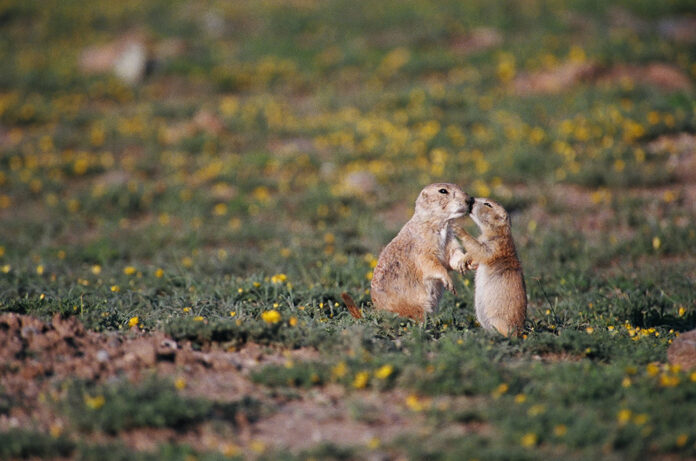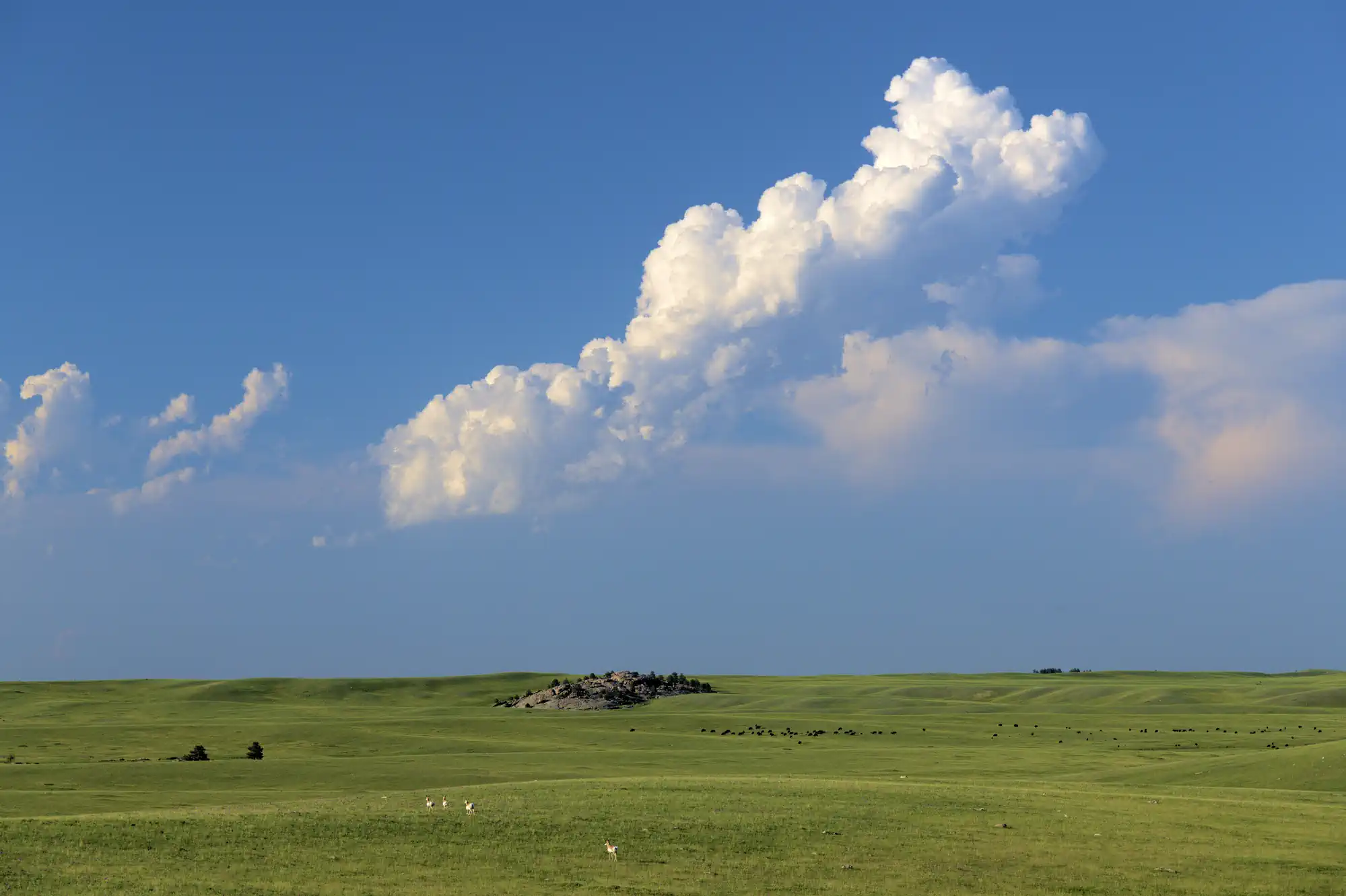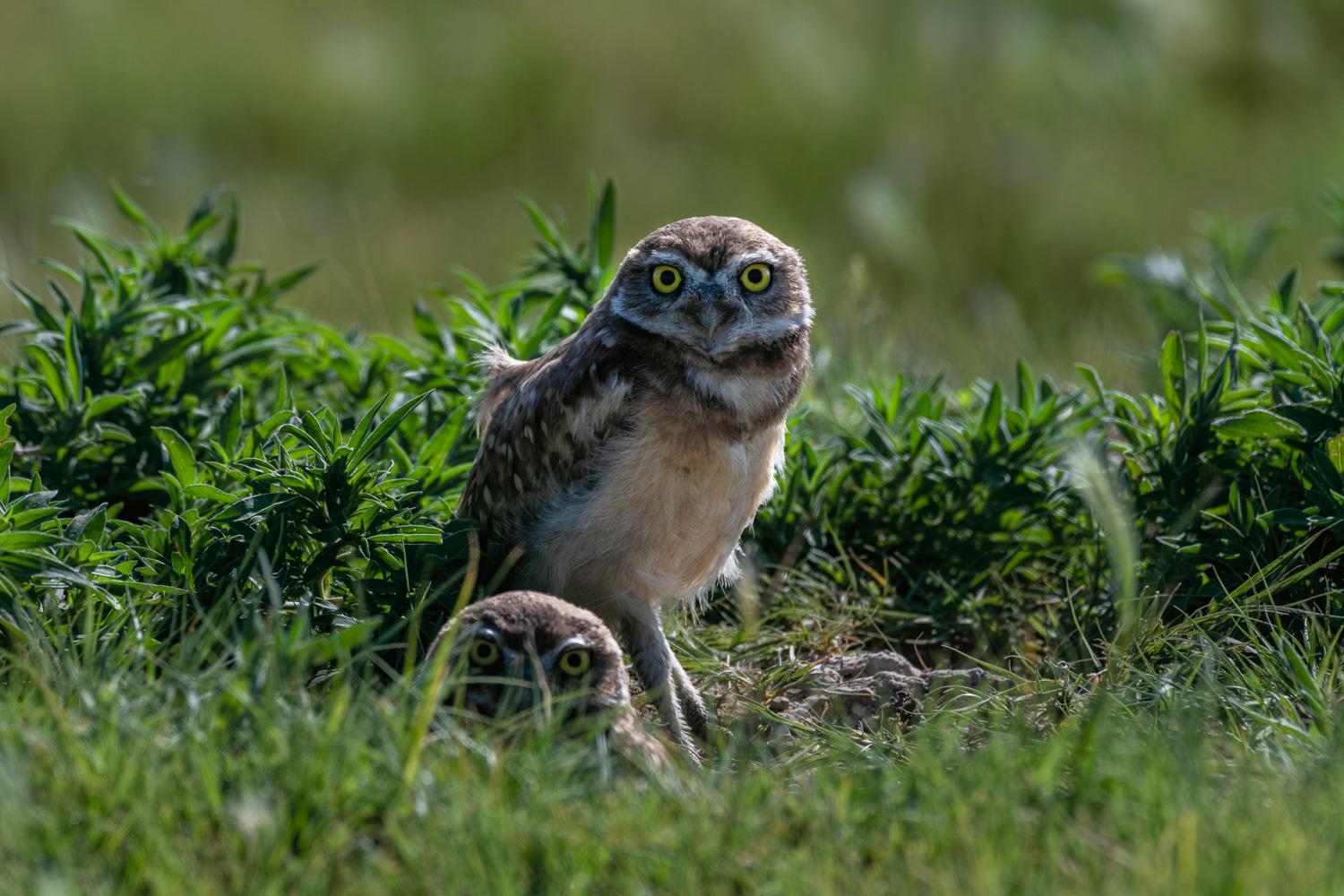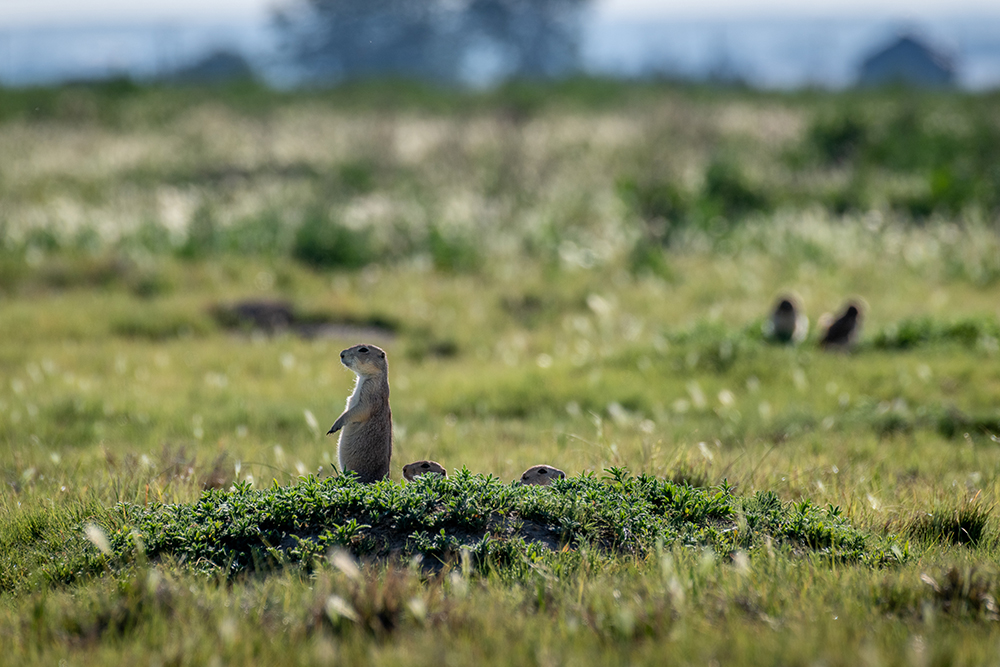The Great Plains stretch across the heart of North America, spanning Nebraska, North Dakota, South Dakota, Colorado, Kansas, Montana, New Mexico, Oklahoma, Texas, and Wyoming. Though often grouped together as a single region, each state harbors its own ecoregions and ecosystems, with landscapes as diverse as the species that inhabit them.
For a first-time visitor arriving in the WyoBraska region—western Nebraska and southeastern Wyoming—the Plains are both humbling and deceiving. At first glance, the land may appear to be an endless expanse of rolling hills, broken only by a scattering of cottonwoods, barbed wire fences, center-pivot irrigation arms, and the occasional farmhouse or herd of cattle. Yet with each mile, the landscape reveals its grandeur: subtle rises give way to vast horizons, and the sheer openness instills a sense of scale difficult to find elsewhere in America.
As you approach the North Platte River Valley, the scenery transforms. Deep canyons carved through grasslands seem to swallow the horizon, while massive buttes tower more than 800 feet above the valley floor. These natural monuments are more than rock—they are records of geologic time, with windblown silt, volcanic ash, and flood deposits laid down over 32 million years. Each stratum tells a story, and together they form the backdrop for both ancient wildlife migrations and the modern struggles of conservation.
Life on the Edge: Wildlife of the Plains
The Great Plains are not empty. They are alive with an intricate web of life, where every insect, reptile, bird, and mammal has adapted to scarcity. Grassland species are specialists, evolving to survive in a land where extremes of drought, fire, and flood dictate survival. Each creature depends on the other in subtle ways—predator on prey, grazer on grass, scavenger on the fallen.
Among the most misunderstood yet crucial players in this ecosystem is the black-tailed prairie dog (Cynomys ludovicianus).
Plight and Persecution of the Black-Tailed Prairie Dog
When agriculture arrived on the Plains, the land began to change. Habitat was plowed under, rivers were dammed and diverted, pesticides and chemical fertilizers disrupted soil health, and coal-fired industry introduced toxic ash into air and water. Amid this transformation, one small, social rodent became a lightning rod for conflict: the black-tailed prairie dog.
Often dismissed as a pest by ranchers and farmers, prairie dogs are in fact “ecosystem engineers”—a keystone species that shapes entire landscapes. Through burrowing and foraging, they aerate the soil, influence plant composition, and create conditions that support hundreds of other species. Their colonies attract a wealth of life: birds nest in their burrows, predators hunt them, and herbivores flock to their nutrient-rich foraging grounds.
In Montana alone, more than 100 vertebrate species depend on prairie dog towns. Rare and endangered species—including the black-footed ferret (Mustela nigripes), swift fox (Vulpes velox), mountain plover (Charadrius montanus), and burrowing owl (Athene cunicularia)—are directly tied to the fate of prairie dogs. Even bison, pronghorn, and domestic cattle prefer grazing where prairie dogs have been at work, as their activity boosts the nutritional quality of grasses.
And yet, prairie dogs have been relentlessly targeted. Viewed as competitors for forage, they are poisoned, shot for sport, and displaced by development. In the past 75 years, their habitat has been reduced to just 2% of its original range. This loss cascades through the food chain, threatening countless other species.
A Future at Risk
Once numbering in the billions and recorded in the journals of Lewis and Clark, black-tailed prairie dogs are now a fraction of their historic population. Today, their colonies are smaller, fragmented, and increasingly vulnerable to sylvatic plague—a disease that can wipe out entire towns in weeks. Without them, the biodiversity of the shortgrass prairie is collapsing.
This is more than the story of one species. It is the story of an entire ecosystem under siege.
How Do We Save Them?
Shooting and poisoning offer only temporary relief to landowners and contribute to long-term ecological collapse. Instead, solutions exist that can balance agricultural needs with conservation:
- Tall-grass barriers: Prairie dogs avoid dense vegetation, so planting tall grass buffers around private property can deter them without lethal measures. When paired with electric fencing, these strips also create habitat for pollinators, songbirds, and insects.
- Relocation efforts: Moving prairie dogs from conflict zones to protected areas has shown promise, especially when starter burrows are provided to help them establish. This requires effort, but it has worked where communities value wildlife coexistence.
- Public engagement and education: Changing the perception of prairie dogs from “pest” to “keystone species” is essential. Their survival is not a nuisance—it is an indicator of grassland health.
Get Involved
The fate of the black-tailed prairie dog is tied to broader struggles over conservation in the Great Plains. The Endangered Species Act (ESA) remains our strongest legal safeguard for threatened species, yet political efforts to weaken it continue. Protecting the ESA means protecting the wildlife that defines America’s grasslands.
You can make a difference. Contact your representatives. Support prairie conservation groups. Share the story of the prairie dog and its ecosystem. The Great Plains are not just “flyover country”—they are one of the most important, and most endangered, landscapes on Earth.
- U.S. Fish & Wildlife Service – Black-tailed Prairie Dog Profile
- National Park Service – Prairie Dogs as a Keystone Species
- The Nature Conservancy – The Great Plains
- Journal of Mammalogy – Black-tailed Prairie Dog as an Ecosystem Engineer
- U.S. Forest Service – Prairie Dogs and Grassland Ecosystems
- World Wildlife Fund – Temperate Grasslands, Savannas & Shrublands
- Encyclopedia Britannica – Prairie Dog Overview
- U.S. Geological Survey – Prairie Dog Ecology Research











